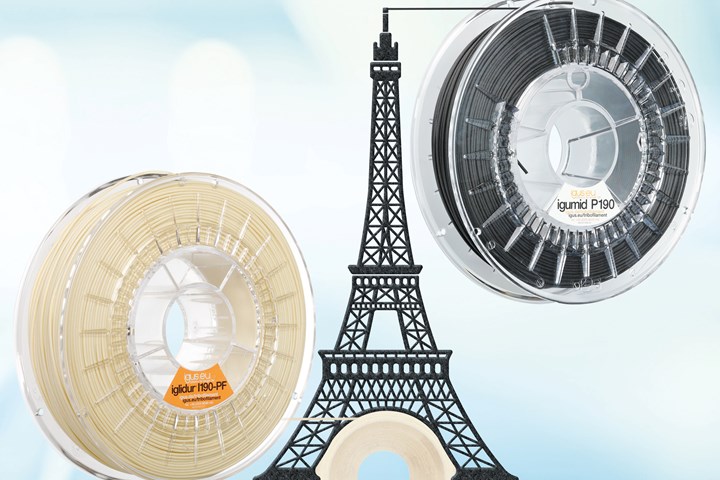High-Strength Filament with Carbon Fiber
Stiff, strong, resilient filament pairs well with its low-friction, wear-resistant companion material.

New high-strength igumid P190 filament from igus bonds well with iglide (or iglidur in Germany) internally lubricated filament for low-friction wear resistance. (Photo: igus)
A stiff, resilient and high-strength 3D printing filament containing carbon fibers is new from . Its igumid P190 is suited to printing lightweight structural parts via the fused deposition modeling (FDM) process. It has a low density of 1.25 g/cc, flexural strength of up to 237 MPa (34,374 psi) and flex modulus of 11.5 GPa (1.668 million psi).
What’s more, igumid P190 is suitable for two-component 3D printing together with igus’ iglide i190 (also called iglidur i190 in Germany), a wear-resistant “tribofilament” containing proprietary solid lubricants. The two filaments together are said to form an excellent material bond. Together, they could produce strong, lightweight structural components with a low-friction surface.
Related Content
-
The Connector Conundrum: 3D Printed Mold Tooling’s Role in Innovation
ReelView Fishing faced an electronics obstacle in the development of its new technology for underwater video. Additive manufacturing for moldmaking allowed for the speed necessary to iterate to a solution. How inventors and invention will benefit from new ways of obtaining production-ready tooling.
-
Smooth Operators: Vibration Compensation Improves Robot Performance
Ulendo is working to apply its vibration compensation algorithm to robots. This application is more complex than its initial market of fused filament fabrication 3D printers, but could result in faster, cheaper robots.
-
5 Trends in 3D Printed Injection Mold Tooling
3D printing has moved beyond conformal cooling, and is now being applied to injection molds more broadly. Observations on additively manufactured mold tooling from the Plastics Technology Expo — PTXPO 2025.




